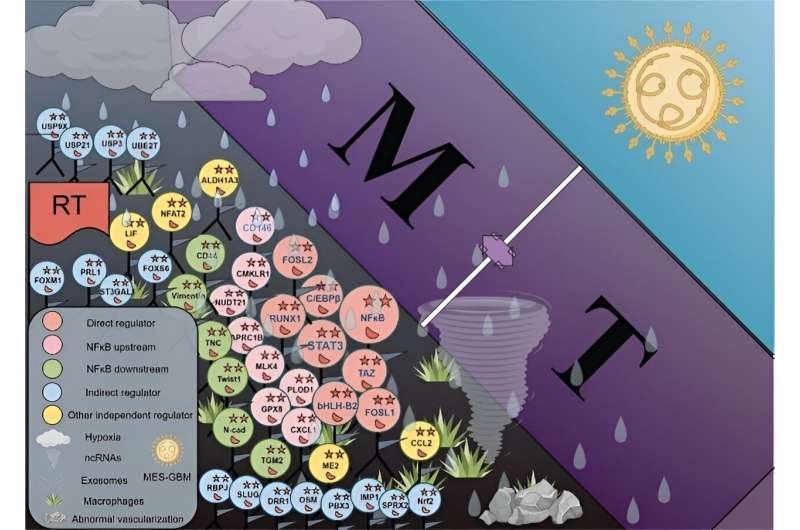This article has been reviewed according to Science X's editorial process and policies. Editors have highlighted the following attributes while ensuring the content's credibility:
fact-checked
trusted source
proofread
The battle against glioblastoma: Classifying molecular profiles for precision medicine

Glioblastoma multiforme (GBM) stands as a formidable adversary in oncology, characterized by its molecular complexity and relentless progression. Despite advancements, the high degree of tumor heterogeneity and its tendency to evade conventional therapies pose significant clinical challenges.
The quest for effective treatments is thus propelled by the necessity to unravel the underlying molecular dynamics and the tumor microenvironment's role in GBM's resilience.
Researchers from Hebei University, in a collaborative effort, have unveiled a comprehensive review published in the Cancer Biology & Medicine on May 6, 2024, focusing on the molecular subtyping of GBM and the exploration of its mesenchymal transition mechanisms, which are key to developing targeted therapies.
This pioneering research meticulously dissects the genetic mosaic of glioblastoma, spotlighting the diversity within its subtypes and their intricate interactions.
The study homes in on the distinct gene expression patterns that set each subtype apart, shedding light on their behavior and responsiveness to therapies.
The proneural-mesenchymal transition (PMT) emerges as a central theme, identified as a critical catalyst for therapy resistance and tumor relapse. This analysis peels back layers of GBM's adaptability, offering a nuanced view of its microenvironmental navigation and response to treatment pressures, setting a solid foundation for more effective, personalized therapeutics.
Dr. Chuan Fang, the lead scientist of the study, said, "Our in-depth review of GBM's molecular phenotypes marks a significant leap in neuro-oncology, offering clarity on subtype characteristics and their transitions. This clarity is essential for devising more accurate and potent therapeutic strategies, with the ultimate goal of bolstering patient survival rates and life quality in the face of this aggressive cancer."
The study's insights herald a new era in GBM treatment strategies. With an enhanced understanding of the molecular subtypes and their dynamic transitions, the research paves the way for personalized medicine, where treatments are finely tuned to the genetic fingerprint of individual tumors.
This customized approach is anticipated to amplify treatment efficacy, providing renewed hope for patients and marking a notable advancement in combating this complex form of cancer.
More information: Can Xu et al, Comprehensive understanding of glioblastoma molecular phenotypes: classification, characteristics, and transition, Cancer Biology & Medicine (2024). DOI: 10.20892/j.issn.2095-3941.2023.0510


















